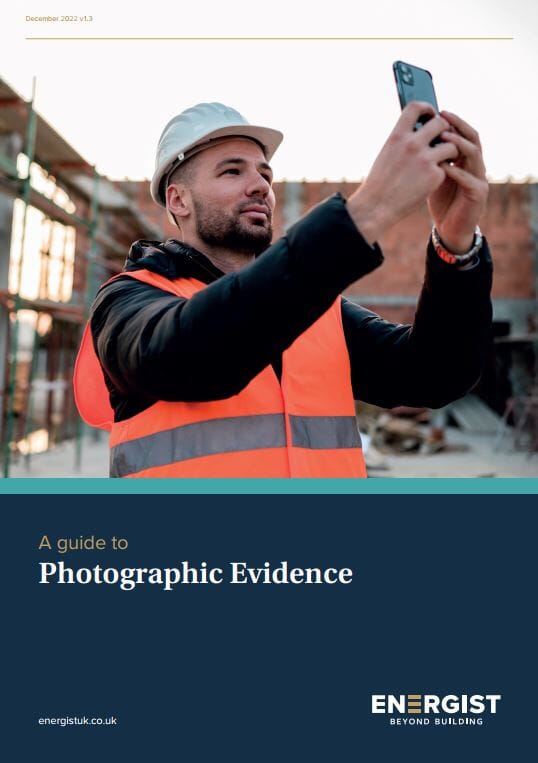
New Building Regulations in Wales
Regulatory Updates
New Building Regulations in Wales

A number of significant changes have been made to Building Regulations for new developments across Wales.
These updates bring the first wave of change for energy and emission targets for the country’s built environment in eight years.
The second wave, scheduled for 2025, will ultimately make low-energy, near-zero-carbon homes the norm.
This first round of updates includes the introduction of a minimum EPC rating, the need to collect photographic evidence on-site, and overheating checks for new dwellings.
When do the changes come in?
Changes to the Approved Documents now apply to Welsh sites registered with Building Control on or after November 23rd, 2022. Sites registered before this date can continue to build to the previous regulations.
As with building regulation changes in England, a 12-month transitionary period for the new arrangements is now underway. By the end of this year (November 23rd, 2023), any dwellings on existing sites not yet built will need to meet the new requirements.
Approved Document Part L (AD-L)
Compliance with SAP is now far more difficult under Approved Document Part L (AD-L). The Target Emission Rate (TER) has been cut by more than a third, and a new Target Primary Energy Rate has been introduced. These targets are similar to those introduced in England in June 2022, although the English targets are slightly more relaxed compared to Wales.
On top of this, every new dwelling must achieve an A or B rated Energy Performance Certificate (EPC). New homes with a C rating or lower will not comply with the new Building Regulations.
Additionally, the maximum U-Value thresholds have been cut. External walls must now achieve a U-Value of 0.18 or lower (relaxed to 0.21 in apartment buildings), roofs must achieve 0.13 and floors 0.15; each reduced from 0.21, 0.15, and 0.18, respectively.
To comply with these targets, developers will need to increase insulation thicknesses. In many cases, increasing wall thickness, installing PV panels to generate onsite electricity, and considering moving away from fossil fuel heating systems will also be necessary.
AD-L also introduces the need to collect and store photographic evidence of every dwelling during construction. Images must be shown to the SAP assessor and Building Control officer as part of the final sign-off process.
For a more detailed look at this requirement, click here
Approved Document Part O (AD-O)
This new section has been added to Building Regulations to assess the overheating risk of new dwellings.
Unlike in England, Approved Document Part O (AD-O) does not apply to every dwelling in Wales. Only plots with a higher risk of overheating need to be reviewed.
This applies to single-storey apartments, bungalows, any home with windows on one façade only, and any dwelling considered to have noise, pollution or security risks.
Developers now have two routes available for those plots requiring AD-O compliance. The simplified calculation checks the amount of glazing for excessive solar gains and the number of openings to ensure enough air can move through the dwelling during hot weather.
Alternatively, the developer can commission a dynamic model of the building to show AD-O compliance. This detailed analysis (known as a TM59 overheating model) checks the internal room temperatures minute by minute and reports on how hot the property is expected to get during a typical summer.
AD-O also sets new safety requirements for upper floor openings and security steps for ground floor openings.
Approved Document F (AD-F)
The ventilation section of Building Regulations has also been upgraded as part of November’s changes, including measures for older buildings.
More emphasis has been placed on making sure dwellings have enough natural airflow (infiltration) to avoid the risk of stale air building up. There is also new guidance to reduce the risk of polluted air feeding into dwellings through the ventilation system.
Condensation is becoming more of an issue when older buildings are renovated, as air infiltration is often reduced during improvement works. The new guidance aims to provide enough natural air flow in buildings to avoid the risk of condensation following a renovation.
What about non-residential developments?
The Welsh Government has taken a staggered approach to the launch of the new Building Regulations. Updated versions of AD-L and AD-F for non-residential buildings went live on March 29th, 2023.
On mixed-used sites which were registered in between the November 2022 and March 2023 dates, both old and new versions of the Approved Documents can be used. In these cases, we recommend the non-residential areas are brought forward into the new regulations to avoid confusion over the compliance requirements.
What does this mean for my development?
November’s changes have been designed to prepare the construction industry for what’s to come. As the UK works towards the 2050 zero carbon target, the way we build our homes must adapt to become more sustainable with lower heat loss, more on-site energy generation, and completely removing our reliance on fossil fuel heating systems.
Our Technical Team can review your upcoming developments to ensure you’ll be fully compliant with both AD-L and AD-O requirements.






